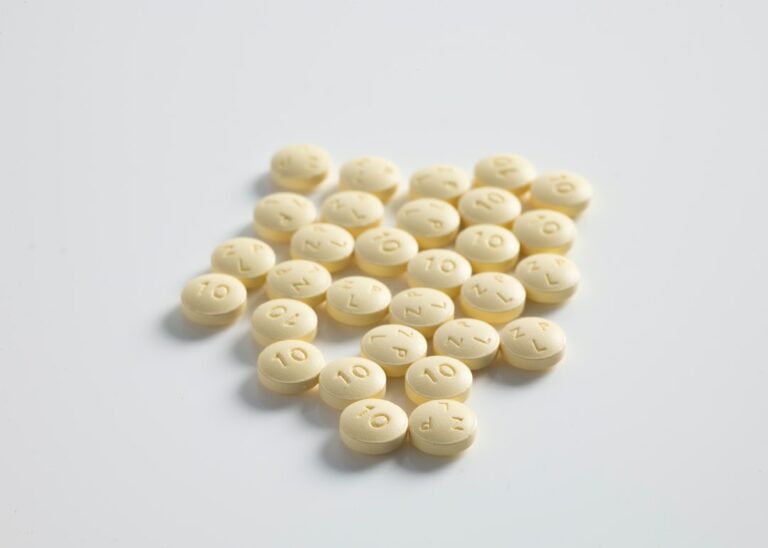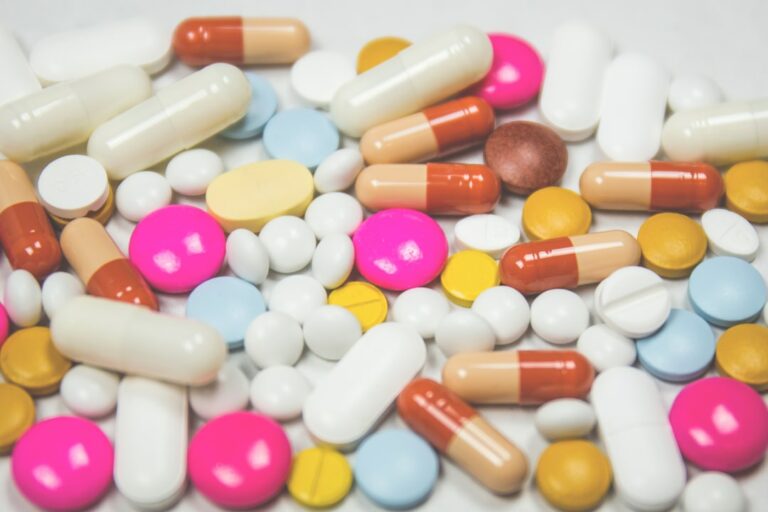Introduction
What is bacteria?
Bacteria are single-celled microorganisms that can be found everywhere in the environment. They are incredibly diverse and can exist in various shapes and sizes. Some bacteria are beneficial and play important roles in the body, such as aiding in digestion and producing essential vitamins. However, certain bacteria can also be harmful and cause infections and diseases. Understanding bacteria and their impact on the body is crucial for maintaining good health. In this article, we will explore the question, ‘What kills bacteria inside the body?’ and discuss the importance of toxin cleanse in combating harmful bacteria.
Importance of bacteria in the body
Bacteria play a crucial role in maintaining the overall health and well-being of the human body. The science behind bacteria reveals that they are not all harmful; in fact, many bacteria are essential for various bodily functions. These beneficial bacteria help in digestion, nutrient absorption, and even play a role in boosting the immune system. Without bacteria, our bodies would struggle to break down food and absorb nutrients efficiently. Additionally, bacteria contribute to the production of certain vitamins and help in the prevention of harmful pathogens. Understanding the importance of bacteria in the body is vital for maintaining optimal health.
Types of bacteria in the body
There are several types of bacteria that can be found in the human body. These bacteria play important roles in maintaining overall health and functioning. Some of the most common types of bacteria in the body include Lactobacillus, Bifidobacterium, and Escherichia coli. Each of these bacteria has its own unique characteristics and functions. For example, Lactobacillus is commonly found in the digestive system and helps with the digestion and absorption of nutrients. Bifidobacterium is also found in the digestive system and contributes to a healthy gut environment. Escherichia coli, although often associated with infections, is actually a normal part of the intestinal flora and helps with the production of vitamin K. Understanding the different types of bacteria in the body is important for maintaining a balanced and healthy microbiome.
Natural Defense Mechanisms

Immune system
The immune system is a complex network of cells, tissues, and organs that work together to defend the body against harmful pathogens and foreign invaders. It plays a crucial role in identifying and eliminating bacteria, viruses, and other microorganisms that can cause infections. When bacteria enter the body, the immune system activates various defense mechanisms to neutralize and eliminate them. These mechanisms include the production of antibodies, the activation of white blood cells, and the release of chemical signals to attract immune cells to the site of infection. The immune system also has the ability to remember past infections, allowing it to mount a faster and more effective response in case of reinfection. Overall, the immune system is a powerful defense mechanism that helps to kill bacteria and protect the body from harmful infections.
Antibiotics produced by the body
The human body has the ability to produce its own antibiotics to fight against bacteria. These natural antibiotics are produced by various cells and tissues in the body and play a crucial role in maintaining a healthy immune system. One example of an antibiotic produced by the body is lysozyme, which is found in tears, saliva, and mucus. Lysozyme works by breaking down the cell walls of bacteria, effectively killing them. Another important antibiotic produced by the body is defensins, which are small proteins that can directly kill bacteria by disrupting their cell membranes. These natural antibiotics help to protect the body from harmful bacteria and contribute to overall health and well-being.
Competition from beneficial bacteria
Competition from beneficial bacteria plays a crucial role in the overall well-being of millennial individuals. The importance of millennial well-being cannot be overstated, as it directly impacts their physical and mental health. Beneficial bacteria compete with harmful bacteria inside the body, preventing the overgrowth of pathogens and maintaining a healthy microbial balance. This competition ensures that millennial individuals have a strong immune system, reducing the risk of infections and diseases. Moreover, the presence of beneficial bacteria in the gut promotes proper digestion and nutrient absorption, contributing to the overall well-being of millennials. Therefore, understanding and nurturing the competition from beneficial bacteria is of paramount importance for the well-being of millennials.
External Factors

Hygiene practices
Hygiene practices play a crucial role in maintaining overall health and preventing the growth and spread of bacteria inside the body. Proper hygiene practices not only help in preventing infections but also contribute to a healthy immune system. One important aspect of hygiene practices is menopause management, which involves taking care of the body during this natural phase of a woman’s life. Menopause management includes various strategies such as maintaining a balanced diet, regular exercise, and managing symptoms through hormone therapy or natural remedies. By adopting these practices, women can ensure a smooth transition through menopause and reduce the risk of bacterial infections.
Environmental conditions
Bacteria inside the body can be killed by various environmental conditions. These conditions include temperature, pH level, and oxygen availability. High temperatures can denature proteins and disrupt bacterial cell membranes, leading to their death. Extreme pH levels, either too acidic or too alkaline, can also inhibit bacterial growth and survival. Additionally, the presence of oxygen or lack thereof can affect bacterial metabolism and ultimately kill them. It is important to note that different types of bacteria have different tolerances to these environmental conditions, and some may be more resistant than others. Therefore, understanding and manipulating these conditions can be a valuable strategy in controlling bacterial infections.
Exposure to harmful substances
Exposure to harmful substances can have detrimental effects on the body’s ability to fight off bacteria. One such substance is Equelle, which has been shown to have a significant impact on bacterial growth. Equelle is a powerful antibacterial agent that targets and kills bacteria within the body. Its effectiveness lies in its ability to disrupt the bacterial cell wall, rendering the bacteria unable to survive. This makes Equelle an important tool in the fight against bacterial infections.
Medical Interventions

Antibiotics
Antibiotics are powerful medications that are used to treat bacterial infections. They work by killing or inhibiting the growth of bacteria in the body. Antibiotics have been widely used in modern medicine to combat various bacterial diseases. However, it is important to note that antibiotics are not effective against viral infections, such as the common cold or flu. In recent years, there has been a growing interest in natural medicine series as an alternative to antibiotics. Natural medicine series include various herbal remedies, essential oils, and other natural substances that have been traditionally used to fight bacterial infections. These natural remedies are often considered to be gentler on the body and may have fewer side effects compared to antibiotics. While more research is needed to fully understand the effectiveness of natural medicine series, they offer a promising avenue for exploring alternative treatments for bacterial infections.
Antiviral medications
Antiviral medications are a type of medication specifically designed to treat viral infections. These medications work by targeting the virus and inhibiting its ability to replicate and spread within the body. Unlike antibiotics, which are effective against bacterial infections, antiviral medications specifically target viruses. They can be used to treat a wide range of viral infections, including influenza, HIV, hepatitis, and herpes. Antiviral medications are often prescribed by healthcare professionals and can help reduce the severity and duration of viral infections. It is important to note that antiviral medications are not effective against bacterial infections, as they specifically target viruses.
Antifungal treatments
Antifungal treatments are an essential part of combating fungal infections in the body. These treatments are specifically designed to target and eliminate the fungi that cause such infections. One common symptom of fungal infections is night sweats, which can be uncomfortable and disruptive to sleep. Therefore, it is important to address this symptom effectively through antifungal treatments. By targeting the underlying cause of the infection, these treatments can help alleviate night sweats and promote better overall health.
Diseases and Conditions

Infections
Infections are a common occurrence in the human body, posing a threat to our health and wellness. These harmful invaders can enter our system through various means, such as cuts, wounds, or even through the air we breathe. Once inside, bacteria can multiply rapidly, leading to a range of symptoms and complications. To combat these infections, our immune system kicks into action, working tirelessly to identify and eliminate the harmful bacteria. However, in some cases, the immune response may not be strong enough, requiring medical intervention to eradicate the infection. It is crucial to prioritize our health and wellness by practicing good hygiene, maintaining a balanced diet, and seeking prompt medical attention when needed.
Autoimmune diseases
Autoimmune diseases occur when the immune system mistakenly attacks the body’s own healthy cells and tissues. This can lead to chronic inflammation and damage to various organs and systems. While the exact cause of autoimmune diseases is not fully understood, factors such as genetics, environmental triggers, and a compromised immune system play a role. In order to manage autoimmune diseases, a holistic lifestyle approach is often recommended. This includes adopting a balanced diet, engaging in regular exercise, managing stress levels, getting enough sleep, and avoiding harmful substances. By taking a comprehensive approach to health and well-being, individuals with autoimmune diseases can support their immune system and improve their overall quality of life.
Cancer treatments
Cancer treatments have come a long way in recent years, with advancements in both traditional and alternative medicine. Alternative medicine, in particular, has gained attention as a potential complement to conventional cancer treatments. Many individuals seek out alternative therapies such as herbal remedies, acupuncture, and meditation to help manage symptoms and improve overall well-being. While alternative medicine should not be used as a substitute for evidence-based treatments, it can play a valuable role in supporting cancer patients’ physical and emotional health. By incorporating alternative medicine into their treatment plans, individuals may find relief from side effects, enhance their immune system, and experience a greater sense of control over their journey.
FAQ (Frequently Asked Questions)

How do antibiotics kill bacteria?
Antibiotics are a type of medication that can effectively kill bacteria inside the body. They work by targeting specific components of bacterial cells, such as the cell wall or protein synthesis machinery, and disrupting their normal functioning. By doing so, antibiotics can inhibit bacterial growth and ultimately lead to the death of the bacteria. It is important to note that different antibiotics may have different mechanisms of action, but they all share the common goal of eliminating harmful bacteria. Some common types of antibiotics include penicillin, tetracycline, and erythromycin.
Can bacteria become resistant to antibiotics?
Bacteria have the ability to develop resistance to antibiotics, which poses a significant challenge in the treatment of bacterial infections. This resistance occurs when bacteria undergo genetic changes that enable them to survive the effects of antibiotics. Over time, repeated exposure to antibiotics can select for resistant bacteria, leading to the emergence of antibiotic-resistant strains. This phenomenon is a result of natural selection, where bacteria that are resistant to antibiotics have a survival advantage and are able to multiply and spread. It is important to note that the misuse and overuse of antibiotics contribute to the development of antibiotic resistance. Therefore, it is crucial to use antibiotics judiciously and only when necessary to prevent the further spread of resistant bacteria.
What are some natural remedies to kill bacteria?
Bacteria are tiny microorganisms that can cause various infections and diseases in the body. While there are several synthetic antibiotics available to combat bacterial infections, many people prefer natural remedies to kill bacteria. These remedies not only have antimicrobial properties but also offer additional health benefits. One such natural remedy is mercury detox, which has been found to be effective in killing bacteria. Mercury detox involves the removal of mercury from the body, which can help eliminate harmful bacteria. This process can be achieved through various methods such as consuming detoxifying foods, using herbal supplements, or undergoing chelation therapy. By incorporating mercury detox into your routine, you can boost your body’s natural defense against bacterial infections and promote overall well-being.






































